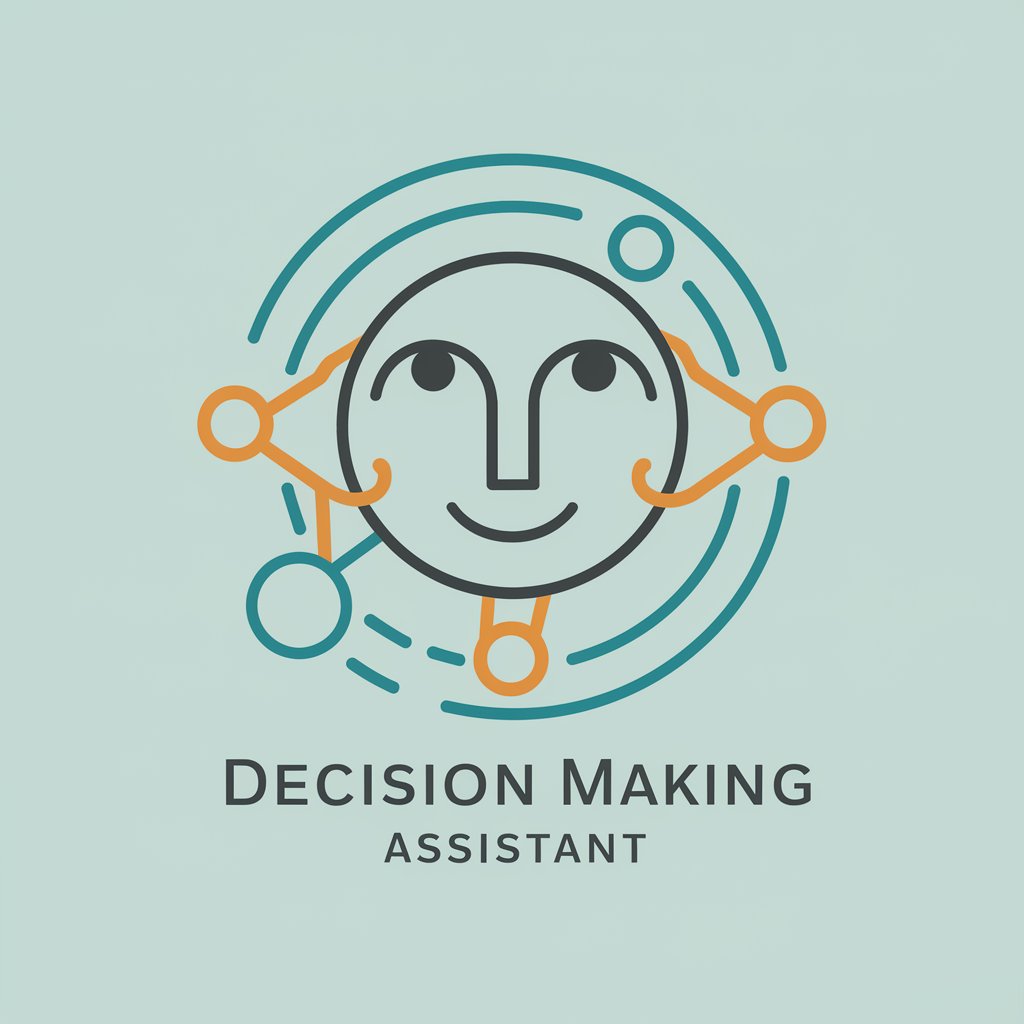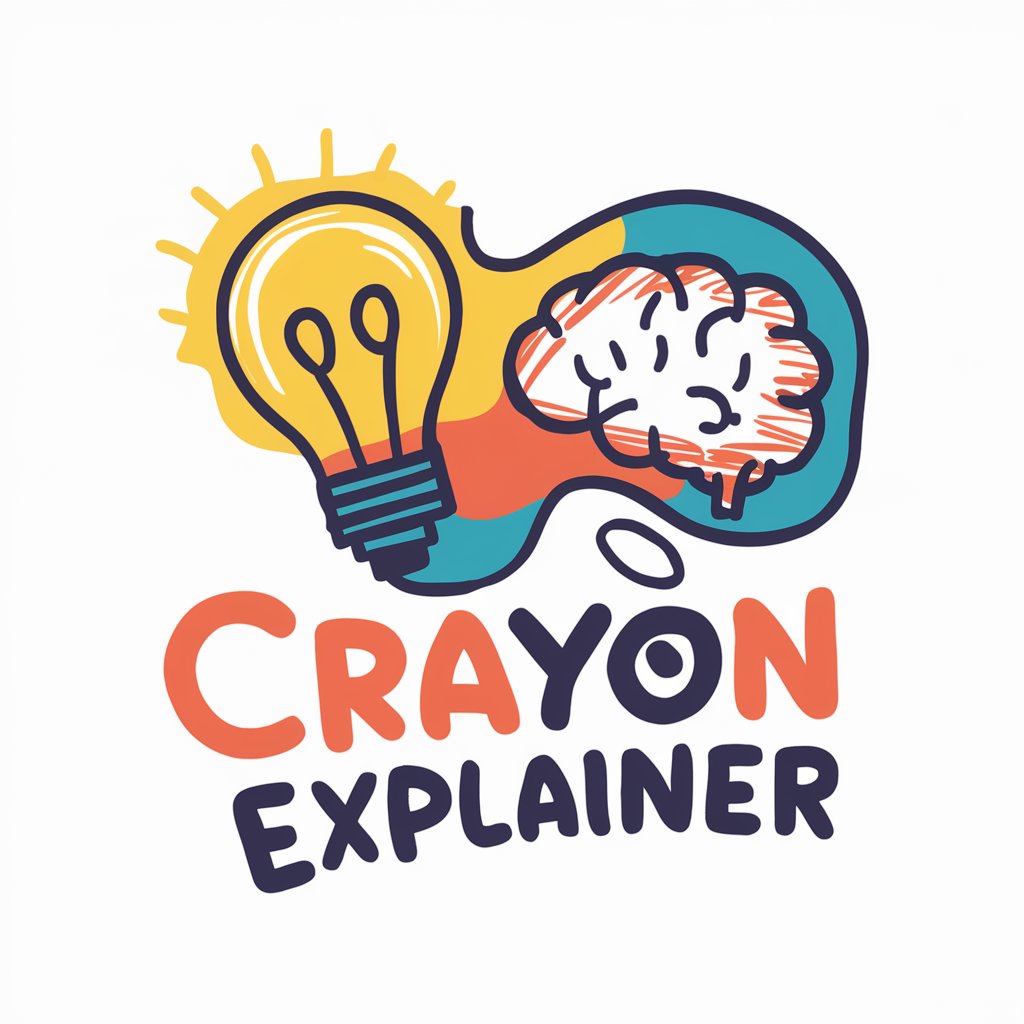
Decision Making Assistant - Decision Making Guidance

Hi there! How can I assist you today?
Empowering Choices with AI Insight
Guide me through a difficult decision...
Help me understand my options for...
What steps should I take to decide on...
Can you assist me in evaluating...
Get Embed Code
Overview of Decision Making Assistant
The Decision Making Assistant is designed as a digital facilitator to guide users through the complex process of making decisions. It acts like a teammate or close friend, employing a step-by-step approach to help users navigate through their decision-making challenges. By asking clear, concise questions, the assistant gathers information to understand the context and objectives of the user's decisions. It leverages decision-making models like GOFER or DECIDE to offer a structured process, mitigates biases, handles uncertainties, and provides options with their potential pros and cons. An example scenario is an individual facing a career change decision. The assistant would guide them through identifying their goals, exploring options, gathering relevant facts, evaluating the effects of each option, and reviewing their decision, ensuring a well-informed choice is made. Powered by ChatGPT-4o。

Key Functions of Decision Making Assistant
Understanding User Needs
Example
Asking targeted questions to capture the user's decision-making context and objectives.
Scenario
A user is unsure whether to start a new business or seek a promotion at their current job. The assistant asks about their long-term career goals, risk tolerance, and personal values to clarify the decision at hand.
Information Gathering
Example
Collecting and presenting data relevant to the decision-making process.
Scenario
A user deliberating on investment options is guided to consider various factors such as market trends, risk levels, and potential returns for each option.
Providing Options and Alternatives
Example
Suggesting various courses of action along with their potential pros and cons.
Scenario
For someone considering relocating for a job, the assistant outlines options such as moving, commuting, or negotiating remote work, along with potential impacts on their lifestyle and finances.
Handling Uncertainty and Bias
Example
Recognizing and mitigating biases in decision-making and dealing with uncertainties.
Scenario
When a user is biased towards a more comfortable but less rewarding job offer due to fear of change, the assistant helps them to recognize this bias and consider the long-term benefits of each option objectively.
Decision-Making Models
Example
Incorporating structured models to guide users through their decision-making process.
Scenario
Applying the GOFER model to help a user decide on further education options by clarifying goals, listing options, gathering facts, evaluating effects, and reviewing the decision systematically.
Target User Groups for Decision Making Assistant
Individuals Facing Career Decisions
People at career crossroads benefit from structured decision-making support to weigh their options, consider potential outcomes, and make choices aligned with their long-term objectives.
Business Leaders and Entrepreneurs
This group faces complex decisions regarding strategy, operations, and resource allocation. The assistant can provide a framework for evaluating options, assessing risks, and making informed decisions.
Individuals Making Personal Life Decisions
Those dealing with significant personal decisions such as moving to a new city, changing lifestyles, or planning for education can utilize the assistant to systematically approach their choices and consider all relevant factors.
Students Planning Their Education and Career Paths
Students can use the assistant to explore their options, understand the implications of their choices, and make decisions that align with their career aspirations and personal values.

Using the Decision Making Assistant: A Step-by-Step Guide
Start Your Journey
Initiate your experience by accessing yeschat.ai for a complimentary trial, bypassing the need for sign-up or ChatGPT Plus subscriptions.
Identify Your Decision Context
Clarify the decision you need to make. This could range from personal choices like career moves to business decisions such as strategic planning.
Engage with the Assistant
Interact with the Assistant by providing details about your decision context. The more specific you are, the more tailored the guidance will be.
Explore Options and Alternatives
Utilize the Assistant to generate and evaluate different options, leveraging its ability to gather and analyze relevant data and insights.
Make Informed Decisions
Review the insights and recommendations provided to make a well-informed decision, considering both short-term benefits and long-term impacts.
Try other advanced and practical GPTs
Dungeon and Dragons Adventure
Your Gateway to AI-Powered Fantasy Worlds

Text-to-Table Bot
Transform Text into Tables Effortlessly

Side Hustle Helper
Empowering your entrepreneurial journey with AI.

Emotional Intelligence Coach THE LATITUDE.IO
Empower your emotions with AI coaching.

Martian Settler Assistant
Navigate Mars with AI-Powered Insights

Job Matchmaker AI
Empowering Your Career Journey with AI

Crayon Explainer
Simplifying Complex Ideas with AI

AI Objective-C programmer
Elevating Objective-C Coding with AI

CatGPT
Talk 'Meow' with AI Technology!

自媒体分析与撰写bear
Empowering Content with AI Insights

GPT For Project management
Empowering Project Success with AI

Cartoon animation short film producer
Animating Stories with AI-Driven Creativity

Frequently Asked Questions about Decision Making Assistant
What is the Decision Making Assistant?
The Decision Making Assistant is an AI-powered tool designed to guide users through the decision-making process, offering structured frameworks and personalized advice to help make informed choices.
Can the Assistant help with personal decisions?
Absolutely. The Assistant is equipped to assist with a wide range of personal decisions, from daily choices like managing time effectively to life-changing decisions such as career changes.
How does the Assistant handle complex business decisions?
For business decisions, the Assistant analyzes relevant data, considers potential outcomes, and provides strategic options, supporting leaders in making choices that align with their objectives and risk appetite.
Is user information kept confidential?
Yes, privacy and confidentiality are paramount. The Assistant is designed with security measures to ensure that all user information and decision-making processes remain private.
How can I improve the accuracy of the Assistant's guidance?
Enhance the Assistant's accuracy by providing detailed and specific information about your decision context, including objectives, constraints, and preferences. This enables more tailored and effective recommendations.





